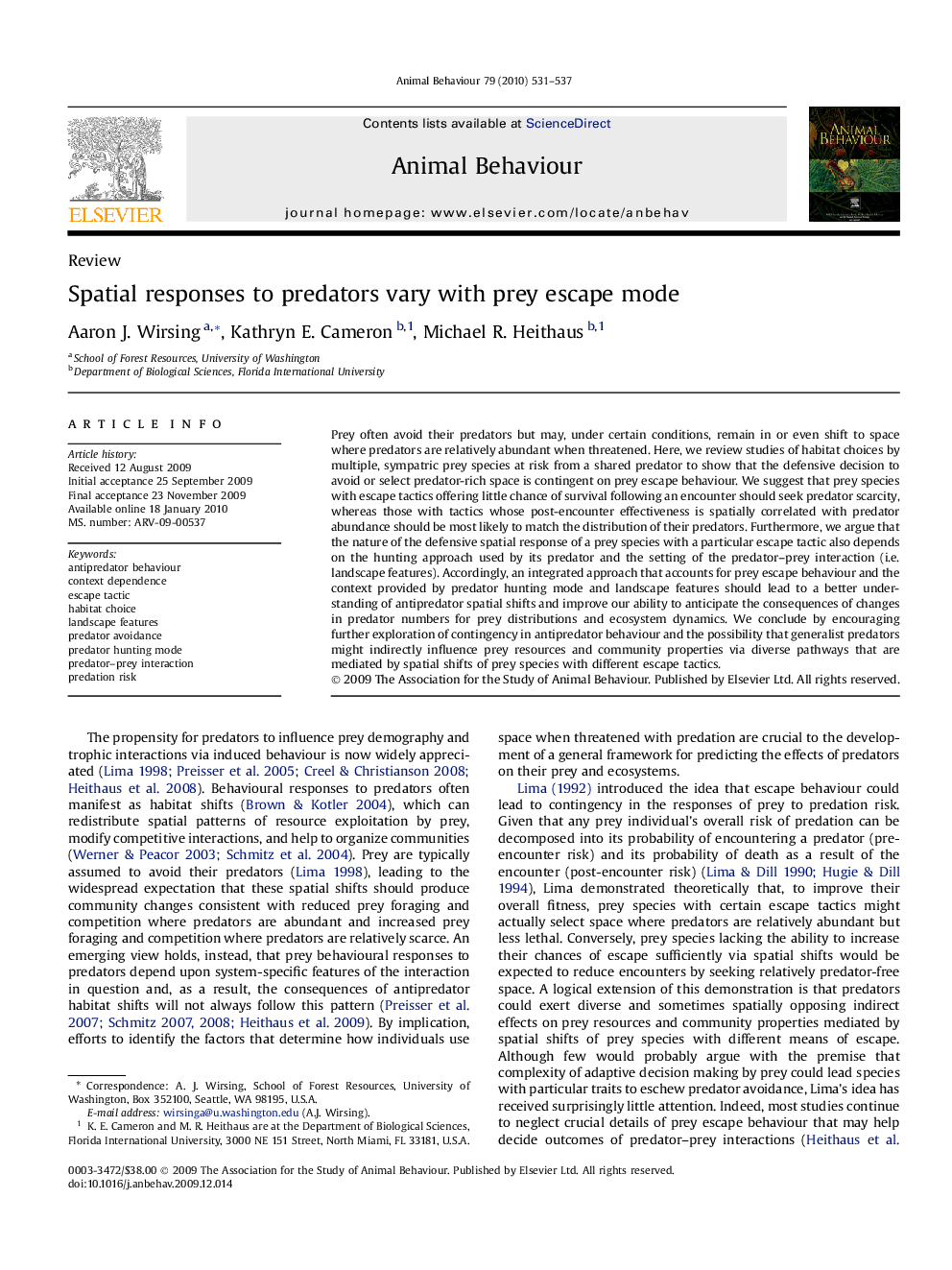| کد مقاله | کد نشریه | سال انتشار | مقاله انگلیسی | نسخه تمام متن |
|---|---|---|---|---|
| 2417380 | 1104318 | 2010 | 7 صفحه PDF | دانلود رایگان |

Prey often avoid their predators but may, under certain conditions, remain in or even shift to space where predators are relatively abundant when threatened. Here, we review studies of habitat choices by multiple, sympatric prey species at risk from a shared predator to show that the defensive decision to avoid or select predator-rich space is contingent on prey escape behaviour. We suggest that prey species with escape tactics offering little chance of survival following an encounter should seek predator scarcity, whereas those with tactics whose post-encounter effectiveness is spatially correlated with predator abundance should be most likely to match the distribution of their predators. Furthermore, we argue that the nature of the defensive spatial response of a prey species with a particular escape tactic also depends on the hunting approach used by its predator and the setting of the predator–prey interaction (i.e. landscape features). Accordingly, an integrated approach that accounts for prey escape behaviour and the context provided by predator hunting mode and landscape features should lead to a better understanding of antipredator spatial shifts and improve our ability to anticipate the consequences of changes in predator numbers for prey distributions and ecosystem dynamics. We conclude by encouraging further exploration of contingency in antipredator behaviour and the possibility that generalist predators might indirectly influence prey resources and community properties via diverse pathways that are mediated by spatial shifts of prey species with different escape tactics.
Journal: Animal Behaviour - Volume 79, Issue 3, March 2010, Pages 531–537